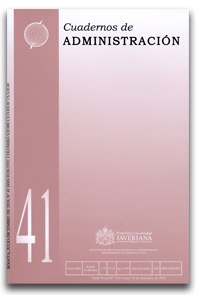Explorando teorias de estrutura de capital na América Latina
##plugins.themes.bootstrap3.article.details##
O principal objetivo deste trabalho é verificar a validade das teorias de estrutura de capital com os modelos de hierarquização financeira e de alavancagem objetivo na forma como as empresas se financiam na América Latina. Utiliza-se uma amostra de empresas corporativas da Argentina, Brasil, Chile, México e Peru, que cotaram em seus respectivos mercados de ações no período compreendido entre 1995 e 2007. A partir de um estudo de painel se rebate a hipótese da hierarquização financeira, ou seja, esta não explica a política de endividamento das empresas latino-americanas. Pelo contrario, os descobrimentos indicam que estas empresas preferem contrair dívida e gozar dos benefícios e custos que isto traz, ao invés de financiar-se com os fundos gerados. Dessa forma se conclui que, ao parecer, para o período de estudo as empresas latino-americanas se comportam de acordo como o modelo de alavancagem objetivo em suas estruturas de capital.
capital structure, financial hierarchization, target gearingjerarquización financiera, apalancamiento objetivo, estructura de capitalhierarquização financeira, alavancagem objetivo, estrutura de capital
De Medeiros, O. and Daher, C. (2004). Testing static trade off against pecking order models of capital structure in Brazilian firms. Recuperado el 8 de mayo del 2009, de http://ssrn.com/ abstract=631563.
Fama, E. and French, K. (2002). Testing trade-off and pecking order predictions about dividend and debt. Review of Financial Studies (15), 1-37.
Farhat, J.; Cotei, C. and Abugri, B. (2009). Testing trade-off and pecking order models under different institutional environments. Recuperado el 5 de mayo del 2010, de http://ssrn.com/abstract=1404596.
Fernández, M.; De Rojas, M. y Zuliani, G. (2004). Contrastación de la teoría del Pecking Order: el caso de las empresas españolas. Valladolid: Universidad de Valladolid.
Frank, M. and Goyal, V. (2000). Testing the pecking order theory of capital structure. Recuperado el 2 de mayo del 2009, de http://ssrn.com/abstract=243138.
Trade-off and pecking order theories of debt. (2007). Recuperado el 4 de mayo del 2009, de http://ssrn.com/abstract=670543
Jalilvand, A. and Harris, R. (1984). Corporate behavior in adjusting to capital structure and dividend targets: An econometric study. Journal of Finance (39), 127-145.
Leary, M. and Roberts, M. (2005). Financial slack and tests of the pecking order's financing hierarchy. Working Paper. Durham, NC: Duke University.
Leland, H. (1994). Corporate debt value, bond covenants, and optimal capital structure. Journal of Finance (49), 1213-1252.
Toft, K. (1996). Optimal capital structure, endogenous bankruptcy, and the term structure of credit spreads. Journal of Finance (51), 987-1019.
Miller M. (1977). Debt and taxes. Journal of Finance (32), 261-275.
Rock, K. (1985). Dividend policy under asymmetric information. Journal of Finance (40), 1031-1051.
Mira, F. (2002). On capital structure in the small and medium enterprises: the Spanish case. working paper series. Madrid: Instituto de Estudios Europeos-Universidad San Pablo CEU.
Modigliani, F. and Miller, M. (1958). The cost of capital, corporation finance and the theory of investment. American Economic Review (68), 261-297.
Corporate income taxes and the cost of capital: a correction. (1963). American Economic Review (53), 433-443.
Myers, S. (1984). The capital structure puzzle. Journal of Finance (39), 575-592.
Majluf, N. (1984). Corporate financing and investment decision when firms have information that investors do not have. Journal of Financial Economics (13), 187-221.
Pandey, I. (2001). Capital structure and the firm characteristics: evidence from an emerging market. Working paper 2001-10-04.Ahmedabad: Indian Institute of Management.
Seifert, B. and Gonenc, H. (2010). Pecking order behavior in emerging markets. Journal of International Financial Management and Accounting, 21 (1), 1-31.
Şen, M. and Oruç, E. (2008). Testing of pecking order theory in Istanbul stock exchange market. International Research Journal of Finance and Economics (21), 19-26.
Shyam-Sunder L. and Myers, S. (1994). Testing static tradeoff against pecking order models of capital structure. National Bureau of Economics Research, 4722, 1-35.
Testing static tradeoff against pecking order models of capital structure. (1999). Journal of Financial Economics (51), 219-244.
Singh, P. and Kumar, B. (2008). Trade off theory or pecking order theory: what explains the behavior of the Indian firms? Recuperado el 5 de septiembre de 2009, de http://ssrn.com/abstract=1263226


